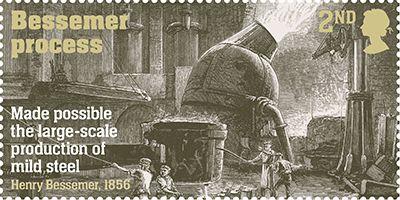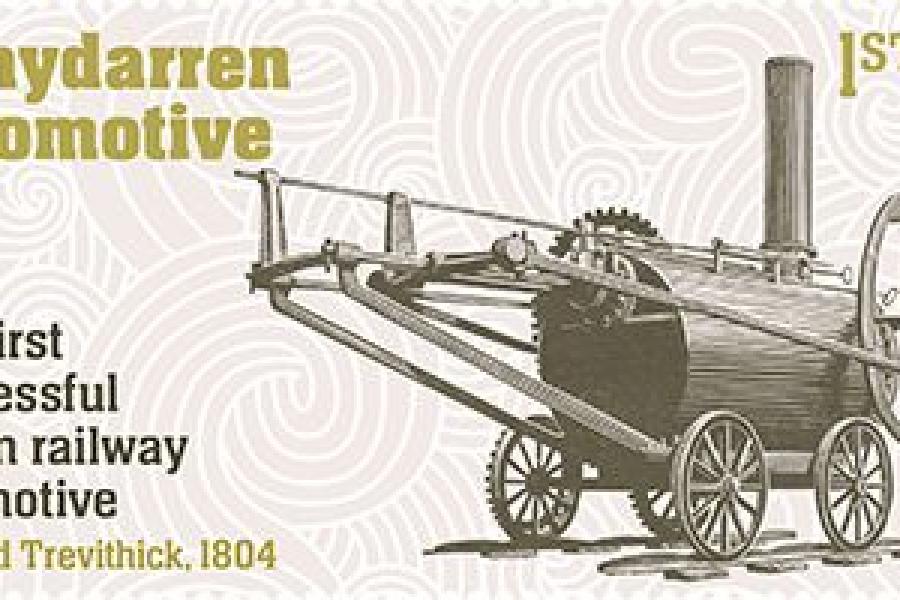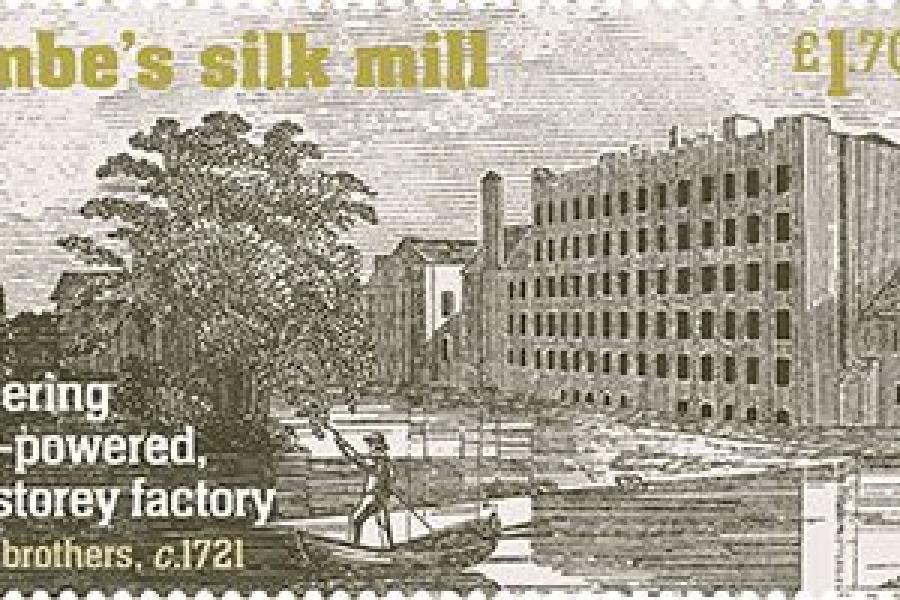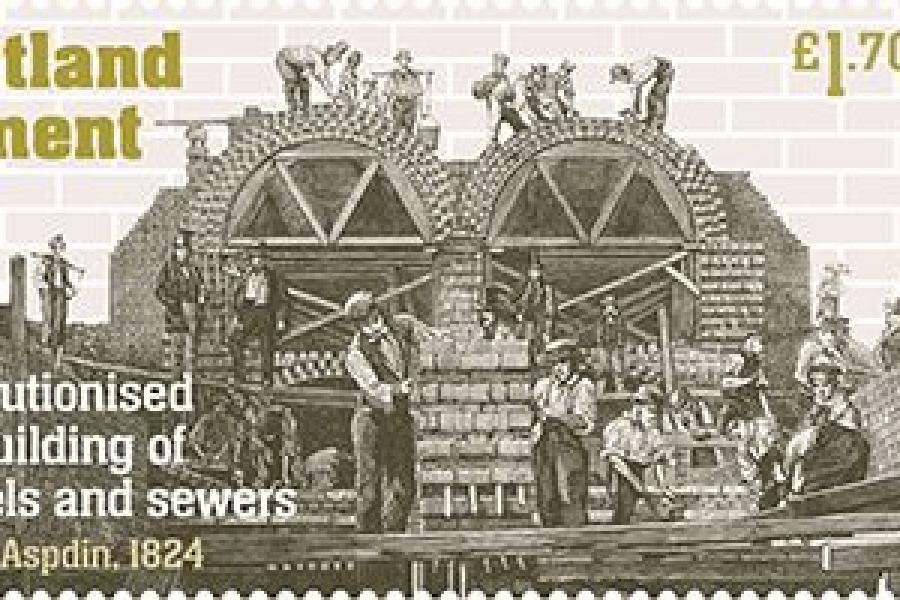Industrial Revolutions

The latest issue from Royal Mail, released on August 12, celebrates Industrial Revolutions, highlighting the pioneering spirit behind some of the most ingenious scientific and engineering advances made in Britain in the 18th and 19th centuries.
A set of six stamps in counter sheets features ground-breaking inventions during what may be called the first industrial revolution, based on the exploitation of water and steam power, the use of new materials in construction, improvements in the efficiency of textile manufacturing, and the development of canal and railway transport networks.
A miniature sheet of four entitled The Electric Revolution recalls how these advances were built upon by harnessing the power of electricity, to improve standards of living and speed up communications.
Designed by Common Curiosity, the issue was printed in litho by International Security Printers, with the counter sheet stamps available in vertically se-tenant pairs.
2nd class BESSEMER PROCESS
Sir Henry Bessemer discovered that blowing air through molten iron produced a violent exothermic reaction, removed impurities and created ‘mild steel’, which had most of the properties of wrought iron but could be produced on a large scale. In 1856 he patented the process, which was carried out in a pear-shaped ‘Bessemer converter’.
2nd class WATT’S ROTATIVE STEAM ENGINE
Among the many contributions to the development of steam power made by James Watt, in partnership with Matthew Boulton, was an engine that could drive machinery directly using sun-and-planet gearing, turning the linear motion of the engine into rotary motion. Steam propelled the piston in both directions in his double-acting engine of 1782, and his parallel-motion system of connecting rods between piston and beam was perfected in 1784.
1st class PENYDARREN LOCOMOTIVE
The first demonstration of a steam engine transporting a load on iron rails was carried out by Richard Trevithick in 1804. The locomotive he built for the Penydarren Ironworks near Merthyr Tydfil pulled 10 tons of iron and about 70 men to the canal wharf at Abercynon, a distance of nine miles.
1st class SPINNING JENNY
In the mid-1760s, James Hargreaves invented the first practical multi-spindle spinning machine, which was a key element in the industrialisation of textile manufacturing. The operator used one hand to move a beam across the top of the frame, drawing and twisting the roving, and the other hand to turn a wheel which caused eight spindles to revolve, spinning it to produce coarse thread. The nickname ‘jenny’ was probably derived from a dialect pronunciation of the word ‘engine’.
£1.70 LOMBE’S SILK MILL
John Lombe and his half-brother Sir Thomas Lombe built the first water-powered multi-storey textile factory in Britain around 1721, for the manufacture of silk. In the five-storey Derby Mill, the silk-throwing process took place on large machines that extended through the lower two floors, while smaller doubling machines worked on the three higher floors. Power was provided by waterwheels driven by the River Derwent.
£1.70 PORTLAND CEMENT
The construction of tunnels and sewers was revolutionised by a new material patented in 1824 by Joseph Aspdin and later developed by his son William. Named because of its resemblance to Portland stone, Portland cement was made from clay and limestone, fired in a kiln and then mixed with gypsum, and became the world’s most important building material, and ingredient of concrete, mortar and grout.
MINIATURE SHEET
2nd class FARADAY GENERATES ELECTRICITY
In 1831, Michael Faraday demonstrated electromagnetic induction, generating a current using lengths of copper wire insulated in cotton wrapped around an iron ring.
1st class TRANSATLANTIC CABLE
The first transatlantic undersea cable for electric telegraphy was laid by the Atlantic Telegraph Company in 1858, from Ireland to Newfoundland, speeding up communications between Britain and North America from weeks to seconds. The 2,000-mile cable quickly failed, but a more durable line was successful when it was laid in 1866.
£1.70 DEPTFORD POWER STATION
Britain’s first large-scale power station was built at Deptford in 1888–89 by Sebastian de Ferranti, using two generators driven by 1500hp steam engines to supply alternating-current electricity to properties in central London.
£2.55 LIGHT BULB
The incandescent light bulb was developed in Britain by Joseph Swan, who was granted a patent in 1880 and set up the Swan Electric Light Company factory in Newcastle-upon-Tyne. His bulbs were soon lighting up public buildings, stately homes and city streets in preference to gaslight.
OTHER PRODUCTS
The presentation pack, written by historian Barrie Trinder, describes the inventions featured on the stamps and offers an insight into the people that created them.
Stamp cards and first day covers are also available.
PRICES
Set of 6 stamps £6.42
Miniature sheet £5.76
Presentation pack £13.10
Stamp cards £4.95
First day cover (stamps) £8.35
First day cover (mini sheet) £7.55
VERDICT
COMMEMORATIVE WORTH 5/5
Britain should be proud of the breakthroughs featured, some of which deserve greater credit than they generally get
QUALITY OF DESIGN 4/5
The illustrations have a period charm about them, even if the inscriptions are unusually wordy
WOW FACTOR 3/5
It is doubtful whether many will be encouraged to take a closer look at the historic developments behind the images
























